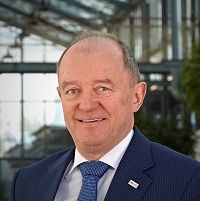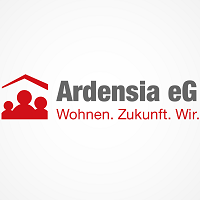Die qualitative und quantitative Verschlechterung von natürlichen Lebensräumen ist laut BUND die Hauptursache für den Rückgang der Insekten. Mit unserer Technologie lassen sich die Lebensbedingungen für Honigbienen lokal erfassen. Diese sind auch ein guter Indikator für die Güte des Standorts als Habitat für andere Insekten.
Wenn Sie herausfinden möchten, wie es um die Lebensbedingungen für Insekten in Ihrer Region steht, sind Sie hier genau richtig. Da Honigbienen meist in einem Radius von 2-3 km um ihren Stock aktiv sind, lässt sich durch die Überwachung eines Standortes die Eignung der Umgebung als Lebensraum für Insekten in einem Umkreis von über 25 km² erfassen.
Durch die technologiegestützte Beobachtung der Bienenvölker lässt sich über das Jahr hinweg folgendes beobachten:
-
Entwicklung und Aktivität der Völker vor Ort
-
Intensität der Bestäubung
-
Verfügbarkeit ausreichender Mengen an Blühpflanzen in der Umgebung
Wird eine Trachtlücke festgestellt, also ein Zeitraum, in dem kein ausreichendes Futterangebot zur Verfügung steht, können auf dieser Basis konkrete Gegenmaßnahmen geplant werden.
Darüber hinaus tragen die an den einzelnen Messpunkt erhobenen Daten dazu bei, eine breite und überregionale Datengrundlage zu schaffen. Auf deren Basis könnte künftig Transparenz über gute Standortvoraussetzungen für Insekten in Städten und ländlichen Gebieten geschaffen werden. Die Daten können zudem genutzt werden, um das Verständnis hinsichtlich der Veränderung der biologischen Vielfalt zu vertiefen und wirkungsvolle Gegenmaßnahmen zu entwickeln.
According to BUND, the qualitative and quantitative deterioration of semi-natural habitats is the main cause of insect decline. With our technology, the local living conditions of honeybees can be identified. This is also a good indicator for the quality of the site as a habitat for other insects.
If you are looking to find out more about the living conditions for insects in your region, you have come to the right place. Since honey bees are mostly active within a radius of 2-3 km around their hive, the monitoring of a location can determine the suitability of the environment as a habitat for insects within a radius of over 25 km².
Through the technology-supported monitoring of the colonies, the following can be tracked throughout the year:
-
Development and activity of local colonies
-
Intensity of pollination
-
Availability of sufficient quantities of flowering plants in the surrounding area
If a temporary lack of flowering plants is detected, targeted countermeasures can be planned on this basis.
In addition, the data collected at the individual measuring points help to create a broad and supra-regional data basis. Based on this data, transparency could be created in the future regarding good location conditions for insects in cities and agricultural areas. It can also be used to deepen the understanding of changes in biodiversity and to develop effective policy responses.
Unsere Lösung
Monitoring eines Standorts
Kernleistungen:
- Statistiken über die Anzahl aller aus- und einfliegenden Bienen, um Rückschlüsse auf die Mortalität der Bienen und demnach die Bienengesundheit zu ziehen.
- Quantifizierung der eingetragenen Pollen, um Rückschlüsse auf das Sammelverhalten und Nahrungsangebot zu ziehen.
Ergänzende Leistungen:
- Installation der Prototypen an zwei Bienenstöcken
- Betrieb und regelmäßige Instandhaltung der Prototypen
- Kick-off-Veranstaltung
- Projektwebsite
- Visualisierung der Daten aus den Bienenstöcken
- Softwareupdates in Folge der Entwicklung weiterer Funktionen
- Individuelle Flyer und Poster für die Kommunikation
- Regelmäßige Newsletter zum Projektfortschritt
Our solution
Monitoring of a site
Core services:
- Statistics on the number of bees entering and leaving the hive in order to draw conclusions about their mortality and activity.
- Quantification of the pollen collected in order to draw conclusions about the foraging behavior and food availability.
Supplementary services:
- Installation of prototypes on two beehives
- Operation and regular maintenance of prototypes
- Kick-off event
- Project website
- Visualization of data from beehives
- Customizable flyers and posters for communication
- Regular newsletter on the progress of the project
Zusätzliche Leistungen Additional services
Sie besitzen keine eigenen Bienenvölker? Kein Problem! Unser Partner nearBees bietet Ihnen ein Bienenpatenschaftspaket.
Zusätzliche Leistungen von nearBees u.a.:
- Zwei Bienenvölker inkl. zweier Bienenstöcke, betreut durch einen Imker vor Ort
- 20 kg Honiggarantie pro Volk
- Amtliche Anmeldung und Versicherung der Bienen
- Individuelle Jahresabschlussbroschüren
- Auftaktveranstaltung mit dem Imker und Bienenschulung
You do not have your own bee colonies? No problem! Our partner nearBees offers you a bee sponsorship package.
Additional services from nearBees a.o.:
- Two bee colonies incl. two hives, looked after by a local beekeeper
- 20 kg honey guarantee per hive
- Official registration and insurance of bees
- Individual annual report brochures
- Kick-off event with beekeeper and bee education
Monitoring mehrerer Standorte
Bei der Überwachung von bestimmten Regionen oder ganzen Stadtteilen liefern mehrere Standorte noch fundiertere Informationen. Das gilt insbesondere für die Bewertung der Vielfalt der lokalen Pflanzenwelt.
Zusätzliche Leistungen bei mehreren Standorten:
- Jahresbericht mit Informationen zum allgemeinen Sachstand
- Visuell aufbereitete Grafiken zu den Daten aus den Bienenstöcken
- Projektplan mit Informationen zum Ablauf der Zusammenarbeit
- Projektwebsite mit Informationen aus allen Stöcken
Monitoring of multiple sites
When monitoring regions or entire districts, several locations provide further substantiated information. This concerns in particular the assessment of the diversity of the local flora.
Additional services for multiple sites:
- Annual report with information on the status quo
- Visualized graphics of data from the hives
- Project plan for the project collaboration
- Project website with information from all hives
Was sagen die Kunden über uns?
What do the customers say about us?
Referenzen unserer Unternehmenskooperationen
References of our business cooperations
Pilotprojekt: Urbane Biodiversität
Die Stadt Karlsruhe fördert den Aufbau eines Testfeldes für die Erfassung der Lebensbedingungen von Insekten in ihrem Stadtgebiet. 2019 wurden an Bienenstöcken privater Imker, öffentlicher Institutionen und engagierter Unternehmen im gesamten Stadtgebiet und der Umgebung die Prototypen unserer Systeme installiert. Inzwischen sind die Systeme an 18 Standorten im Einsatz und können aus der Ferne überwacht und upgedatet werden (siehe Bild unten). Im Jahr 2020 werden an diesen Standorten durch die Beobachtung der Bienen systematisch Daten über die Mortalität, das Futterangebot für Bestäuber und die Vielfalt der urbanen und ländlichen Pflanzenwelt erfasst.
Aus den Daten der einzelnen Messpunkte werden standort- und volksspezifische Erkenntnisse abgeleitet. Anschließend sollen die Erkenntnisse zusammengetragen, aufbereitet und visualisiert werden. Ziel des Vorhabens ist es, lokale und saisonale Probleme darzustellen, auf die das Umwelt- und Liegenschaftsamt mit gezielten Maßnahmen reagieren kann.
Pilot Project: Urban Biodiversity
The City of Karlsruhe is promoting the establishment of a test field for the recording of the living conditions of insects in its area. In 2019, prototypes of the systems were installed on beehives of private beekeepers, public institutions and committed companies throughout the city and its surroundings. The systems are now in use at 18 locations and we can monitor and update them remotely (see picture below). In 2020, data on mortality, food availability for pollinators and the diversity of both urban and rural flora will be systematically collected by monitoring bees at these sites.
From the data of the individual measuring locations, site- and colony-specific findings will be derived. They will then be aggregated, processed and visualised. The aim of the project is to identify local and seasonal problems to which the Environment and Property Agency can respond with targeted measures.

Ihre Frage ist nicht dabei?
Wir helfen Ihnen gerne weiter.
Your question is not included?
We are happy to help you.


